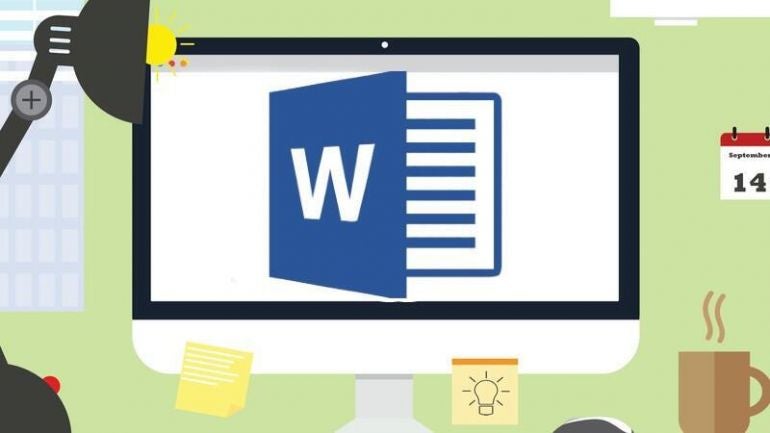
Numbered paragraphs are common in some industries. For example, legal contracts are full of numbered paragraphs. Unfortunately, Microsoft Word doesn’t offer one of its “click right here” options to number paragraphs, but it can be done with a custom style. Now, I know a lot of users hate Word styles, but they are the bread and butter of working efficiently in Word. In this article, I’ll show you how to create a custom style that numbers paragraphs.
SEE: Software Installation Policy (TechRepublic Premium)
I’m using Microsoft 365 on a Windows 10 64-bit system, but you can use an earlier version. For your convenience, you can download the demonstration .docx and .doc files. Word for the web doesn’t support custom styles.
The Word document
When using any style, you can apply the style as you enter the content, or you can apply a style after the fact. We’ll do the latter using the two-page document shown in Figure A. This document uses Heading 1 Heading 2 and Normal.
Figure A
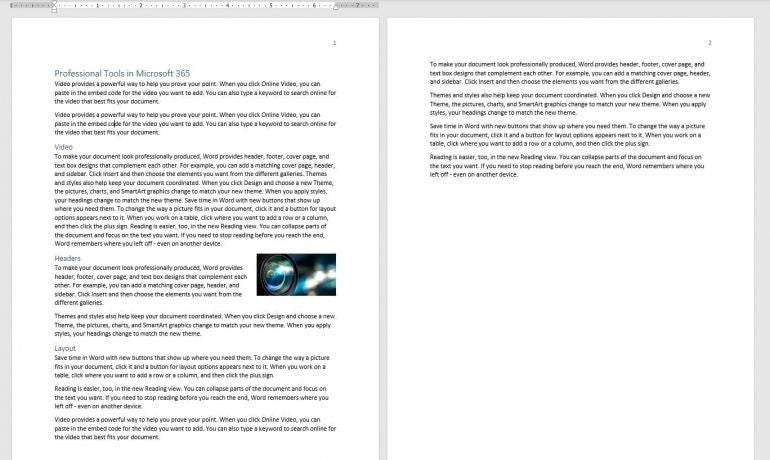
What we know is that we want to number the paragraphs sequentially without changing any other format. Word applies the Normal style as you enter text, so that’s where we’ll start. Although the example is a bit contrived, bear with me because it is simple and won’t distract from the technique.
While this technique requires a few steps, none of them are difficult to implement. Here’s what to expect:
- We’ll copy the Normal style and rename it.
- We’ll add a numbering format to the new style based on Normal.
- We’ll alter the built-in Heading 2 style so that the copy of Normal follows the hard return. This last step may or may not be necessary.
The first thing we need to do is create a copy of Normal. We’re not changing the text formatting; we’re only adding a number to the first line. In his case, it’s easier to copy an existing style than to create one from scratch.
How to copy the Normal style in Word
Copying Normal is the quickest way to create a custom style because we don’t want to change any text format. In our case, we want only to add a numbering scheme. To create a copy is fairly simple:
- Click inside any Normal styled paragraph.
- Click the More button for the Quick Styles gallery in the Styles group on the Home tab.
- From the resulting list, choose Create a Style.
- In the resulting dialog, enter a meaningful name for the new style, such as NormalNumberedPara (Figure B).
Figure B
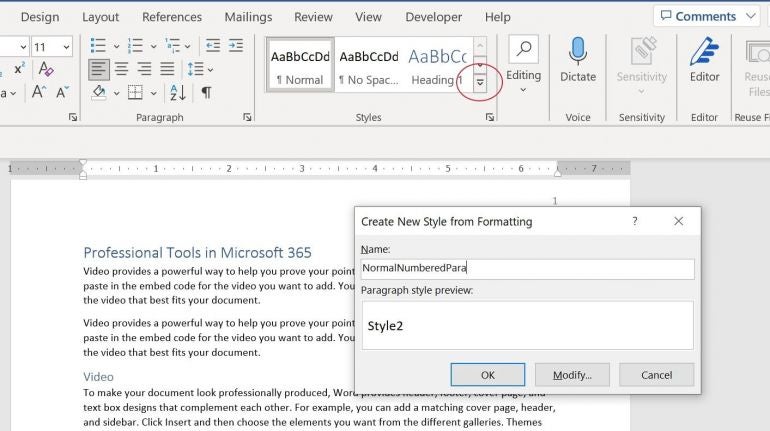
- Click Modify.
- The resulting dialog, choose Paragraph from the Style Type dropdown (Figure C). Right now, this new style is the same as Normal.
Figure C

- Click the Format button and choose Numbering.
- Choose a Numbering format—I chose the one shown in Figure D.
Figure D

- Click OK twice.
As you can see in Figure E, the paragraph you clicked at the very beginning is now numbered.
Figure E

To continue numbering, click a paragraph and apply the new style. (You can’t see the full name in the thumbnail.) If the new style isn’t quite right, modify it.
How to tweak the new style in Word
Let’s take a minute to decide if you like the left indent as is. If not, you can change it at the style level before applying it further. To do so:
- Select the numbers by clicking any of them. The numbers will have a gray background when selected properly.
- Right-click the selection and choose Adjust List Indents from the resulting submenu.
- In the resulting dialog, set the Number Position option to 0”.
- Set the Text Indent option to 0” (Figure F).
Figure F
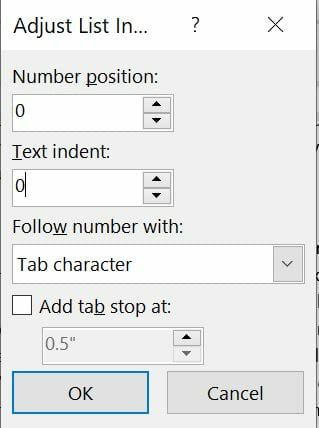
- Click OK and confirm the change to the new style.
Figure G
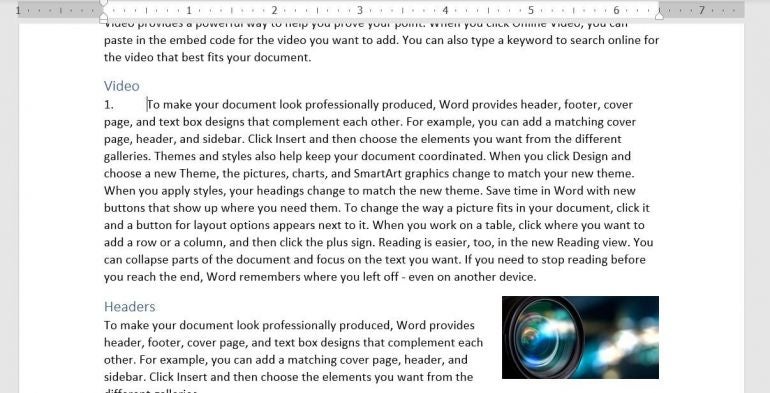
As you can see in Figure G, the paragraph now wraps to the left margin but the indent between the number and the text in the first line is rather large. To fix it, repeat the steps above and add a Tab stop. For instance, if you want to reduce the space to two characters, set a tab stop for .25.
Once the style suits you, select Normal styled paragraphs and click the new NormalNumberedPara style. If you’re adding content, simply switch to NormalNumberedPara as required, or, avoid setting the new style altogether.
How to add the new style to Heading 2 in Word
If you want to avoid changing the styles when entering content, modify the Heading 2 style so that the new style follows. In other words, when you style a heading as Heading 2 and then press Enter to wrap to the next line, the style will automatically call the new style and number the paragraph. It’s really pretty cool.
To accomplish this, do the following:
- Right-click Heading 2 in the gallery and choose Modify.
- From the Style for Following Paragraph dropdown, choose the new style, NormalNumberedPara (Figure H).
- Click OK.
Figure H
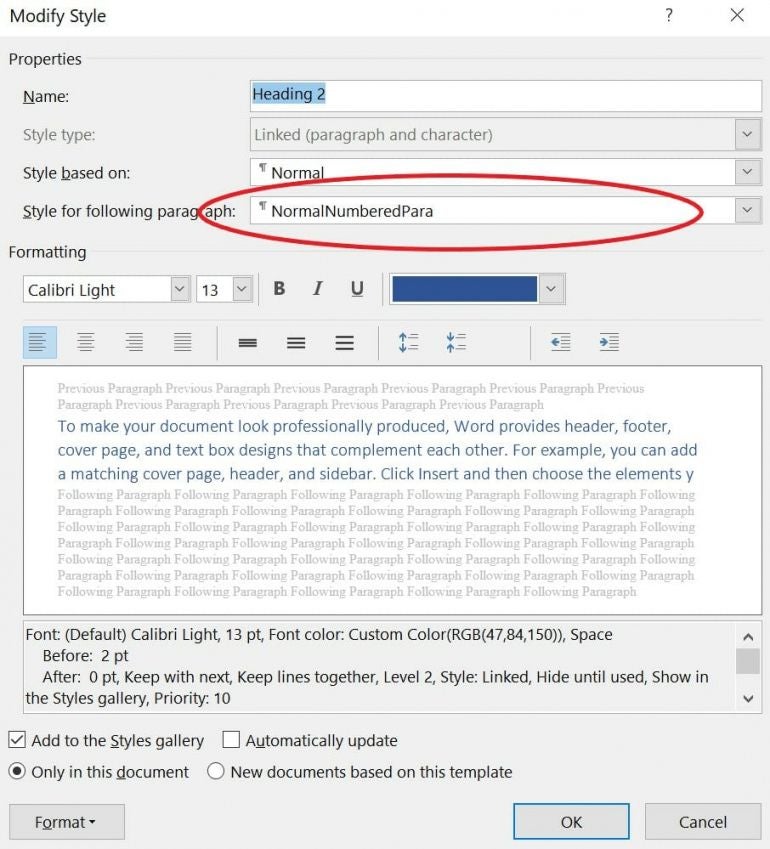
This change won’t work for existing Heading 2 headers, but it will work for new content. Enter and style the header text with Heading 2 and press Enter. The next line will begin with a number! All you have to do is enter the text.
Right now, the numbers don’t restart at each section, which you might want. If that’s the case, right-click the first number after the heading. In the resulting submenu, choose Restart at 1. You’ll have to do that for each new section, which will be a bit tedious in a large document.


